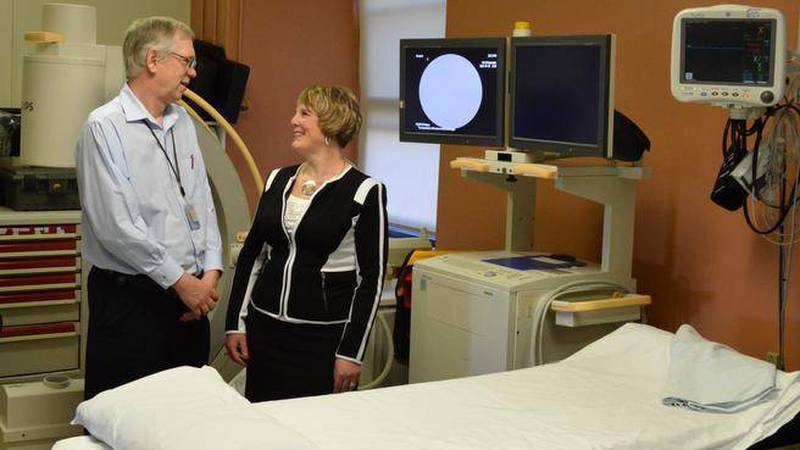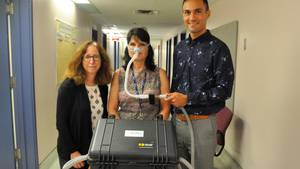Jon Tattrie
Dr. John Clark and his colleagues at the QEII Health Sciences Centre had a hunch: surgical patients on a high dose of opioids seemed to have more post-surgery pain, more complications, and longer hospital stays.
But a hunch does not advance medical science, so Dr. Clark and his team at the QEII’s Department of Anaesthesia, Pain Management and Perioperative Medicine applied for a
“Are our impressions correct?” he asks. “That was the stimulus that said we needed to look at this in more detail. We wanted to identify them so we can then have the acute-pain service staff see these patients post-operatively so they have better pain control, a more pleasant experience in hospital, less complications and a shorter stay in hospital.”
Under the leadership of Dr. Patrick McGrath, Vice-President, Research, Innovation and Knowledge Translation for the Nova Scotia Health Authority and the IWK, the QEII Foundation established the
Dr. Clark’s research investigated 367 “HOT” patients — highly opioid-tolerant — and defined them as people needing three milligrams or more of oral morphine (or morphine equivalent) per hour for greater than one month, 250 of whom had underwent major gastrointestinal, orthopaedic or neurosurgery procedures.
The data showed those undergoing gastrointestinal procedures were admitted to the intensive care unit at a rate of 27.3 per cent, compared to 7.9 per cent in the control group. They stayed in hospital for 25.8 days, compared to nine days in the control group. The other two categories of HOT patients also had less positive outcomes than the control group.
“What the study shows is that if you’re on at least 70 mg of morphine and you’ve been on it for a period of time, then you will be in hospital longer than somebody who’s not,” Dr. Clark says.
It’s not clear why this happens. Patients can become more tolerant and need a higher dose to get the same effect. Some patients might be on opioids for addiction or because they suffer from chronic pain, which could be the underlying problem.
PAIN ‘IMPACTS THE FAMILY’
“We know that having pain has a significant impact on one’s life, one’s mood, and one’s function. The rates of depression are higher if you have chronic pain, your ability to work is less, and your ability to learn is less. It impacts the family,” Dr. Clark says.
The next step is to design care plans that could mitigate change.
Karen Mumford, senior director at the QEII, helped Dr. Clark apply for the grant and explained the operations-side advantages. She says it shows the impact a small grant can have — in this case it was $3,000.
“Although it was a small investment upfront, what we discovered, we can apply to how we deliver care to these patients and determine what resources these patients need,” she says.
In short, the study suggests putting more resources toward the start of a patient’s surgery journey, rather than focusing on the end of the journey with a longer stay. “If we put the resources upfront to do a proper, pre-operative assessment, put a strong pain-management plan in place, then that should really allow their surgical event and inpatient stay to be positively affected.”








